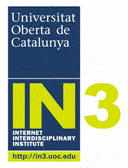Not a Job for Life? Women's Progression, Conversion and Dropout in ICT Professions

Abstract
Why are there fewer and fewer women in ICT professions, while there are increasing numbers of women in other science and engineering professions? Why do young female students turn away from studies leading to ICT jobs, while young girls are just as engaged in Internet use as young boys? Why are women’s careers in ICT jobs still characterised by the ‘glass ceiling’ (invisible obstacles to career progression) and the ‘leaky pipeline’ (dropout and reorientations)? These questions are not new. The problem is precisely that they are recurrent and aggravated.
&
After an introductory overview of research findings concerning the place of women in ICT professions, the second section of this paper will discuss some paradoxes about the position of women in these occupations. The third section will pinpoint some trends in the recent evolution of ICT professions, which have different implications for women and men in terms of their careers and professional development. The last section will consider the career mobility of women in these jobs, particularly the various forms of their entry and exit from the profession.
&
Keywords
gender, ICT professions, careers, gender gap, equality policies
Author Biography
Gérard Valenduc
Co-director of the Research Centre of Fondation Travail-Université (FTU). Visiting professor at the Universities of Louvain-la-Neuve (UCL) and Namur (FUNDP).